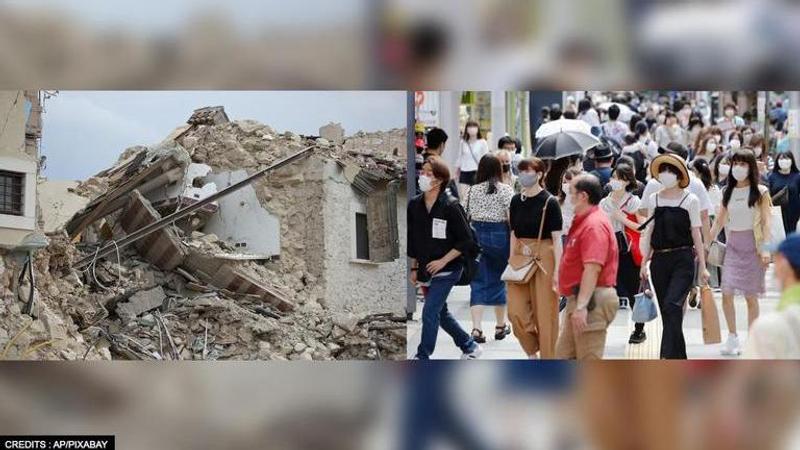Published 12:47 IST, September 14th 2021
6.2-magnitude earthquake strikes off Japan's Ibaraki Prefecture; no tsunami warning
The Ibaraki Prefecture in Japan has been struck by an earthquake measuring 6.2 magnitudes, according to the Japan Meteorological Agency (JMA).

The Japan Meteorological Agency (JMA) informed that an earthquake of a magnitude of 6.2 struck off the coast of Japan's Ibaraki Prefecture on Tuesday, 13 September. Around 7:46 a.m. local time, a 450-km-deep quake struck its epicentre at 32.2 degrees north latitude and 138.2 degrees east longitude. Ibaraki Prefecture recorded a 3 on Japan's earthquake intensity scale, which reaches a maximum of 7. Until now, there has been no tsunami warning issued. Also, there have been no reports of property damage or injuries.
Earlier this year, in February, a 7.1-magnitude earthquake struck off the eastern seaboard, but there was no tsunami warning. According to the US agency USGS, the epicentre of the earthquake was at a depth of 54 kilometres in the Pacific Ocean near Fukushima. In 2011, a tsunami was triggered by an earthquake in the same region, killing more than 18,000 people in Japan. After this, in March 2021, a strong earthquake was felt near Japan's capital Tokyo. The magnitude of the earthquake was measured at 7.2 on the Richter scale. A tsunami warning was issued after an earthquake on the northeastern coast of Japan.
Researchers identify new sources for earthquakes in Greater Tokyo Region
In 2011, a massive magnitude 9 earthquake struck eastern Japan, causing the biggest rupture area of any earthquake originating from the Japan Trench. In addition, it triggered the Fukushima Daichi nuclear accident and a tsunami that moved thousands of miles distant, striking the beaches of British Columbia and California and those of Oregon, Hawaii, and Chile.
Pilarczyk and an international team of collaborators have been studying Japan's unique geologic history for the past decade. Sand deposits from the Boso Peninsula region (50 km east of Tokyo) were discovered and investigated by the two scientists, who attributed them to an abnormally massive tsunami around 1,000 years ago.
Researchers used 13 hypothetical and historical models, including radiocarbon dating, geologic and historical records, and paleoecology, to assess each of the three plate boundaries, including the Continental/Philippine Sea plate boundary (Sagami Trough), the Continental/Pacific plate boundary (Japan Trench), and the Philippine Sea/Pacific plate boundary (Izu-Bonin Trench) as sources of the 1,000-year-old quake, according to the researchers.
(with inputs from ANI)
Image: AP/Pixabay
Updated 12:47 IST, September 14th 2021




